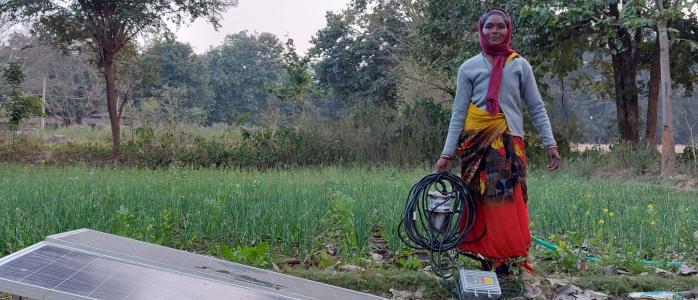



India is racing towards 500 GW of clean power capacity by 2030, and betting on wind as one of its two mainstays to meet this milestone. From 9.3 GW in 2008 to more than 43 GW today, India ranks fourth globally in total wind installations. By 2030, the target is to reach 100 GW of onshore wind and bid 37 GW of offshore projects. But there is still a long way to go. Research by the Council on Energy, Environment and Water (CEEW) shows that India will need a wind capacity of 557 GW by 2050 and 1,792 GW by 2070 to meet its net zero carbon emissions target. However, wind capacity additions have slowed down since 2017. It is now time to step on the accelerator.
What limits the speed and scale?
Wind power development in India gained momentum since 2005, although turbine installations date back to the 1980s. Projects were small in size and received significant fiscal support in the form of accelerated depreciation, tax holidays, as well as generation-based incentives. They were connected to the state grids, and the power was bought by host state discoms at tariffs (known as Feed-in-Tariffs or FiTs) pre-determined by the state regulatory commissions. In 2016-17, India deployed 5.5 GW of wind capacity, an all-time high in history. However, during the FiT regime, the tariffs continuously increased. These high tariffs triggered the move to competitive bidding or the reverse auction mechanism in 2017, a transparent way of discovering market-reflective prices. The transition from FiT to reverse auctions is said to have been a key factor impeding the pace of deployment – an average of 1.6 GW annually between FY2018 and FY2022, compared to 3 GW between FY2013 and FY2017.
Competition during reverse auctions showed tariff reductions, a much-desired outcome with the implementation of the bidding regime. The first auction, conducted by the Solar Energy Corporation of India (SECI), discovered a tariff of INR 3.46, which was lower than the prevailing FiTs1. The tariffs reduced further with the next few rounds of SECI auctions, before stabilising between 2018 and 2021. Subsequent vanilla wind auctions have seen slight tariff increases2.
However, there were some side effects of this approach. The wind energy industry preferred only two states, Gujarat and Tamil Nadu. As a result, almost half of India’s total wind capacity is located in these states only. The geographical concentration of these projects poses logistical, infrastructural and operational constraints. Further, project commissioning timelines were impacted, the number of investors present in the sector reduced in recent years, and locations in other wind-rich states with higher tariffs became less attractive for price-sensitive buyers. States also asked successful bidders to match the lowest-quoted tariffs in the bidding process, which typically impacts project viability. This approach also does not help leverage the natural complementary patterns in wind resources across geographies, which is desirable for cost-effective grid operations. All these signs made India’s wind targets distant.
India steps in for wind energy
The Indian government recognised these challenges and took several measures in 2022 to accelerate the growth of the wind sector. Some of them were:
Avenues for accelerated, diversified and inclusive growth
Wind sector plays a crucial role in India's economic and energy transition journey. As of FY21, the sector employed a workforce of 25,500, which is expected to rise six times by 2030. It already has 15 GW of annual domestic manufacturing capacity, exporting equipment to countries such as Australia, the United States, Europe, Brazil, and others, besides meeting internal demand. We highlight actions that can help realise the massive potential and reap the associated socio-economic benefits.
Disha Agarwal is Senior Programme Lead and Anurag Dey is a Research Analyst at the Council on Energy, Environment and Water (CEEW). Send your comments to [email protected].
1 For instance, 2017 FiTs in Gujarat and Tamil Nadu were INR 4.72/kWh and 4.16/kWh, respectively.
2For instance, the tariffs under SECI tenders in May and Dec 2022, for pan-India projects ranged between INR 2.89 to 2.95, and a Gujarat Urja Vikas Nigam Limited (GUVNL) tender of 500 MW concluded in July 2022 discovered tariffs between INR 2.84 - 3.27.
3Only projects that are commissioned after 31 March 2022 to be considered for compliance
4Tamil Nadu, Andhra Pradesh, Karnataka, Gujarat, Rajasthan, Maharashtra, Madhya Pradesh, Telangana






Add new comment